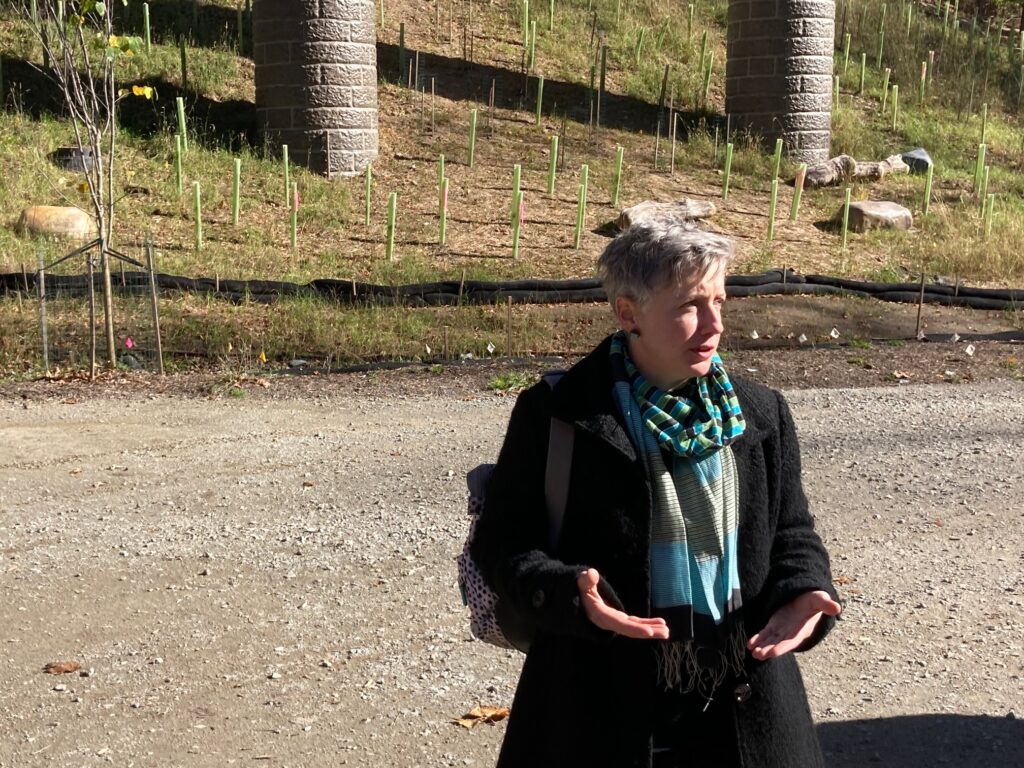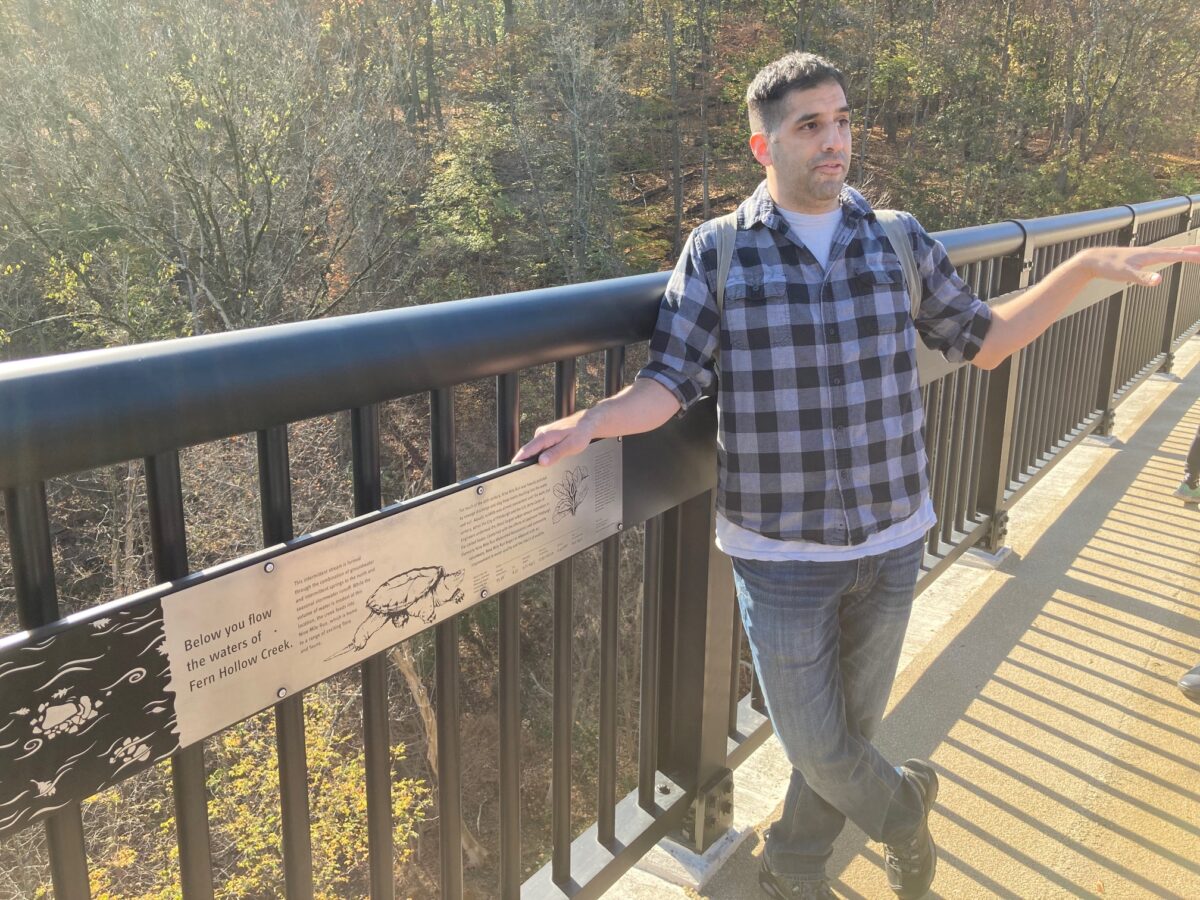In the rush to replace Pittsburgh’s Fern Hollow Bridge after it collapsed in January 2022, the initial design was roundly criticized as plain and utilitarian, something that wouldn’t match the public jewel of Frick Park that surrounded it.
The city’s Office for Public Art took that as a challenge and solicited proposals from artists interested in changing that critique. Using about $250,000, the 1% for public art required in every city project, the office selected two artists and coordinated their efforts with the neighborhood, park users and the replacement team assembled by the Pennsylvania Department of Transportation.
On Friday, Mayor Ed Gainey called a news conference to celebrate two art elements that have breathed life into the otherwise static bridge that carries people between the city’s Squirrel Hill and Point Breeze neighborhoods.
On the bridge itself, artist John Pena used the theme of water — that created the ravine and therefore the need for the bridge — to create a series of stenciled and painted graphics called “400 Million Years of Water.” The graphics, added directly to the surface of the walkway and concrete traffic barriers, trace water in the neighborhood from the Kaskaskia Sea (390 million years ago) to the Ames Sea (303 million years), Pittsburgh River (2.5 million years) and Lake Monongahela (800,000 years) to the small creek that is Fern Hollow today.
Pena, who has lived in the neighborhood for years and walks his dog in the park, said he had the concept for water history but quickly realized he needed scientific help to fill in the blanks.
“I was out of my element,” he said. “I needed actual scientists to help me.”
The result is a small history lesson and a visual treat.

Carin Mincemoyer, who used to live in the neighborhood and regularly used the park, was tapped to design an art element for the trail immediately under the bridge, an area just more than 150 feet long. After ideas to paint the underside of the bridge or have the trail serpentine through the area didn’t quite fill the bill, she settled on “Trail Meander,” a slow, winding path with chunks from weathered trees that were removed from the site placed as benches framed on the hillsides by rock sculptures.
Mincemoyer said her goal was to create a respite spot under the bridge as a counter to the busy activity above. The project was “personally meaningful” for her one-person art business.
“My part was a tiny piece in a huge project, but for me it was huge,” she said.
Gainey said the city’s public art requirement is something that helps the city stand out from its peers.
“Art brings life to everything,” the mayor said. “We always say, ‘How do we make this a beautification for the city?’”
Jason Zang, PennDOT’s district executive, admitted his department’s top priority was completing the new bridge as quickly as possible. At those times, the mention of including art can cause engineers “to look at you with horror,” but the team worked directly with the artists in this case to encourage beautification of the bridge as long as it didn’t interfere with the timeline for construction.
Designers embraced the idea of including special touches such as round decorative support piers instead of basic square concrete, said Jason Fuller, design manager for HDR, the design firm PennDOT hired immediately after the collapse.
“Everyone tried to do what could be done with aesthetics,” he said. “It turned out very nice. I hope people appreciate it.”
Because the replacement project was declared an emergency, the bridge was designed and built simultaneously, reducing the normal three- to five-year process to one year. That quick turnaround also created art challenges, said Sallyann Kluz, executive director of the Office for Public Art.
“The timeline was definitely a restriction,” she said, “but I think they did a fabulous job pulling it off.”
To Mincemoyer, the result is special.
“Art makes something like a bridge feel like a place,” she said. “It isn’t just any bridge. It’s the Fern Hollow Bridge.”
Ed covers transportation at the Pittsburgh Post-Gazette, but he's currently on strike. Email him at eblazina@unionprogress.com.



